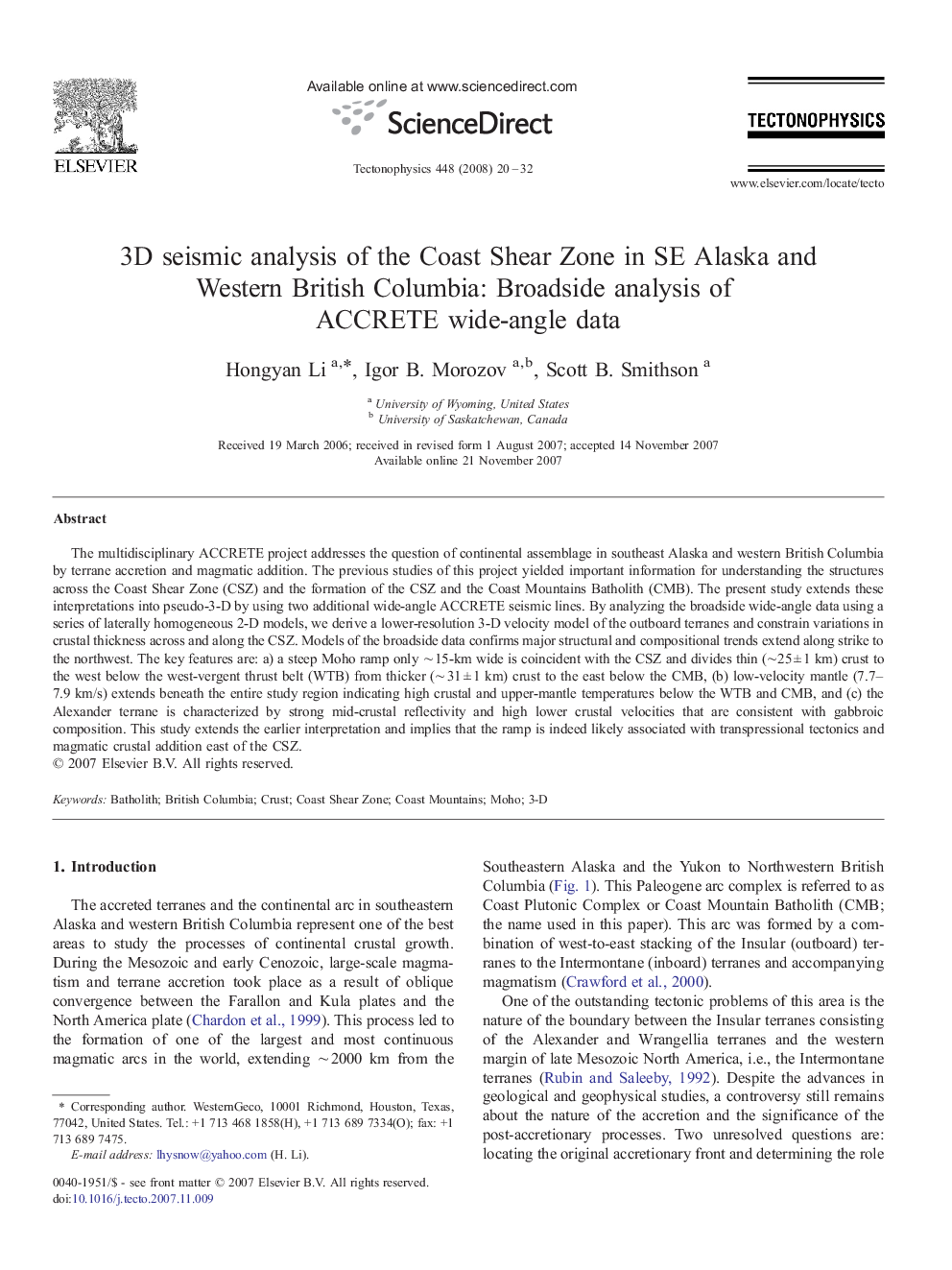| Article ID | Journal | Published Year | Pages | File Type |
|---|---|---|---|---|
| 4694657 | Tectonophysics | 2008 | 13 Pages |
Abstract
The multidisciplinary ACCRETE project addresses the question of continental assemblage in southeast Alaska and western British Columbia by terrane accretion and magmatic addition. The previous studies of this project yielded important information for understanding the structures across the Coast Shear Zone (CSZ) and the formation of the CSZ and the Coast Mountains Batholith (CMB). The present study extends these interpretations into pseudo-3-D by using two additional wide-angle ACCRETE seismic lines. By analyzing the broadside wide-angle data using a series of laterally homogeneous 2-D models, we derive a lower-resolution 3-D velocity model of the outboard terranes and constrain variations in crustal thickness across and along the CSZ. Models of the broadside data confirms major structural and compositional trends extend along strike to the northwest. The key features are: a) a steep Moho ramp only â¼Â 15-km wide is coincident with the CSZ and divides thin (â¼25 ± 1 km) crust to the west below the west-vergent thrust belt (WTB) from thicker (â¼Â 31 ± 1 km) crust to the east below the CMB, (b) low-velocity mantle (7.7--7.9 km/s) extends beneath the entire study region indicating high crustal and upper-mantle temperatures below the WTB and CMB, and (c) the Alexander terrane is characterized by strong mid-crustal reflectivity and high lower crustal velocities that are consistent with gabbroic composition. This study extends the earlier interpretation and implies that the ramp is indeed likely associated with transpressional tectonics and magmatic crustal addition east of the CSZ.
Related Topics
Physical Sciences and Engineering
Earth and Planetary Sciences
Earth-Surface Processes
Authors
Hongyan Li, Igor B. Morozov, Scott B. Smithson,
